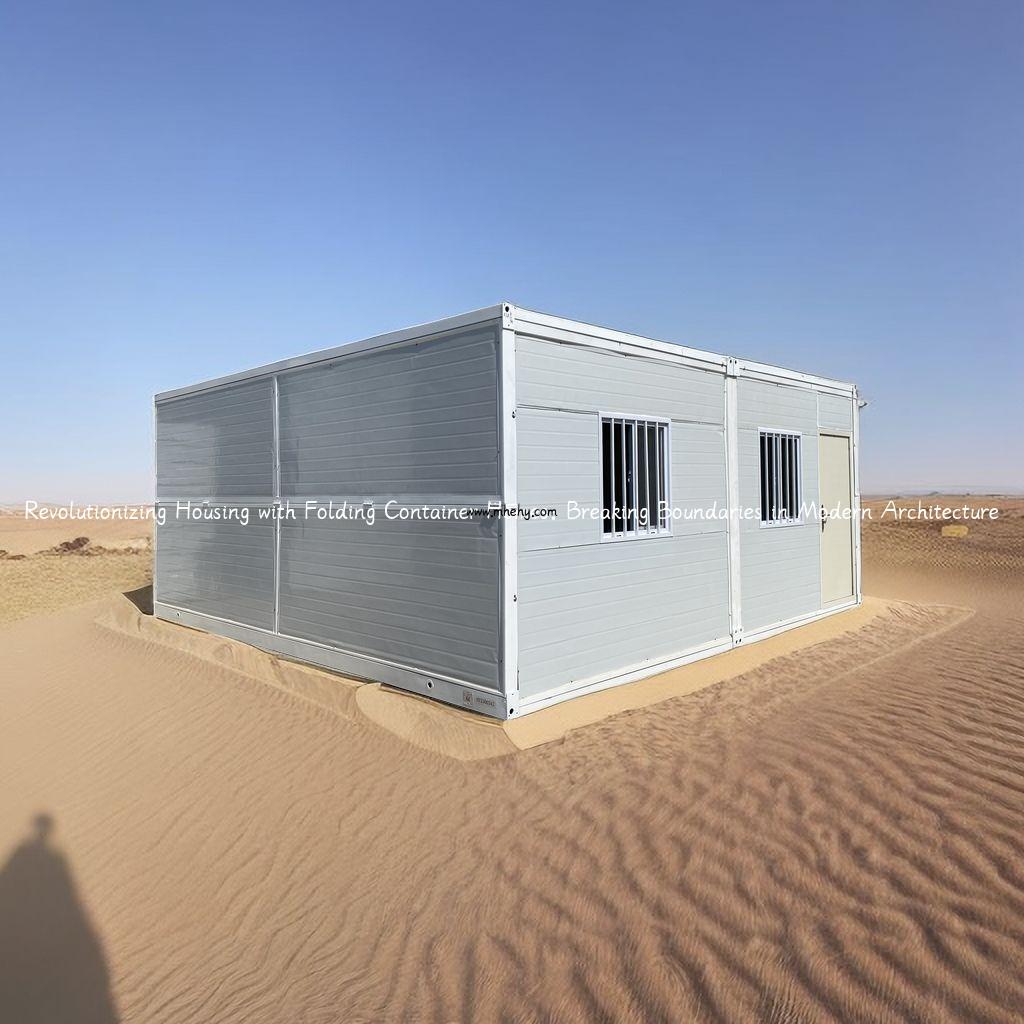Revolutionizing Housing with Folding Container Homes: Breaking Boundaries in Modern Architecture


Revolutionizing Housing with Folding Container Homes: Breaking Boundaries in Modern Architecture
In recent years, the concept of tiny homes and sustainable living has gained considerable attention. People are increasingly seeking alternatives to traditional housing, exploring options that are not only affordable but also environmentally friendly. One such innovation that is revolutionizing the housing industry is the concept of folding container homes. These incredible structures break boundaries in modern architecture, providing flexibility, sustainability, and a unique aesthetic appeal.
Container homes, crafted from shipping containers that have reached the end of their life cycle, have gained immense popularity due to their affordability and ease of construction. Traditional container homes, however, can be limited in terms of space and flexibility. This is where folding container homes come into play, providing a solution to these limitations.
One of the key advantages of folding container homes is their ability to transform and adapt to different needs. The folding mechanism allows the containers to open up, creating more usable space. This flexibility means that these homes can be expanded or contracted depending on the requirements of the occupants. Whether it’s expanding the living room for a gathering or folding up unused spaces to save on energy costs, the options are endless.
Furthermore, folding container homes are designed with sustainability in mind. By repurposing shipping containers that would otherwise be discarded, these structures reduce waste and contribute to a more circular economy. Additionally, the folding mechanism reduces construction waste as the containers can be manufactured off-site and assembled on-site, minimizing the environmental impact typically associated with traditional construction methods.
Another great advantage of folding container homes is their portability. Due to their modular nature, these homes can be easily transported and relocated to a new site. This makes them an ideal option for those who need temporary housing or have a nomadic lifestyle. The ability to pick up and move your entire home to a new location is truly groundbreaking and offers unprecedented freedom and independence to homeowners.
From an architectural standpoint, folding container homes bring a whole new level of creativity and innovation. With their ability to create unique configurations and shapes, these structures break away from the conventional rectangular design of traditional houses. Architects can experiment with different folding patterns, creating fascinating shapes and awe-inspiring interiors. Consequently, folding container homes challenge the traditional norms of residential architecture and introduce a new era of experimentation and artistic expression.
In conclusion, folding container homes revolutionize the housing industry by breaking boundaries in modern architecture. Their flexibility, sustainability, and unique aesthetic appeal make them a game-changer in today’s world. With the ability to transform and adapt to different needs, these homes provide the ultimate living experience. Furthermore, their eco-friendly construction materials and efficient use of space contribute to a more sustainable future. As architects continue to push the boundaries of traditional design, we can expect folding container homes to become an increasingly popular choice for those seeking affordable, flexible, and environmentally friendly housing options.













